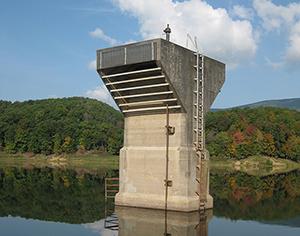Virginia Land Use and Protection
Virginia's major non-urban land uses include forestry, crop production and pastures. Most Virginia wetlands are open or forested and seasonally saturated.

From the Appalachians to the Chesapeake, our conservationists are working to keep Virginia agriculture going strong with customized recommendations to make operations more sustainable and productive while also protecting the scenic beauty of these diverse landscapes.

View Virginia press releases, success stories and PDF versions of many of our brochures and fact sheets.

Our conservationists can develop customized plans to help conserve and protect natural resources on operations of all types and sizes. Reach out to your local office to get started.

Learn more about the Virginia soil health movement that is empowering farmers to learn about their soils, learn from each other and come up with their own soil management solutions.

Get more information on how Virginia NRCS works with local partners help them to conserve and develop their land and water resources before and after major storm events to address natural resource and related economic problems on a watershed basis.

Start or grow your conservation career with Virginia NRCS to help ensure that communities across the commonwealth enjoy the benefits of productive soil, clean water, clean air and abundant wildlife that come from a healthy environment.

Gain valuable work experience that can help introduce you to the various fields of natural resources conservation. About 10 percent of Virginia NRCS employees began their careers as Earth Team volunteers.

Virginia NRCS works through strong conservation partnerships to get more "boots on the ground" to address a broad range of resource concerns and connect with more historically underserved, beginning and urban farmers.

NRCS provides financial assistance for selected conservation practices. The availability and amount of financial assistance can vary between states.

State Technical Committees serve in an advisory capacity to the Natural Resources Conservation Service (NRCS) and other agencies of the U.S. Department of Agriculture (USDA) on the implementation of the natural resources conservation provisions of Farm Bill legislation.
Do you farm or ranch and want to make improvements to the land that you own or lease?
Natural Resources Conservation Service offers technical and financial assistance to help farmers, ranchers and forest landowners.

To get started with NRCS, we recommend you stop by your local NRCS field office. We’ll discuss your vision for your land.
NRCS provides landowners with free technical assistance, or advice, for their land. Common technical assistance includes: resource assessment, practice design and resource monitoring. Your conservation planner will help you determine if financial assistance is right for you.
We’ll walk you through the application process. To get started on applying for financial assistance, we’ll work with you:
Once complete, we’ll work with you on the application, or CPA 1200.
Applications for most programs are accepted on a continuous basis, but they’re considered for funding in different ranking periods. Be sure to ask your local NRCS district conservationist about the deadline for the ranking period to ensure you turn in your application in time.
As part of the application process, we’ll check to see if you are eligible. To do this, you’ll need to bring:
If you don’t have a farm number, you can get one from USDA’s Farm Service Agency. Typically, the local FSA office is located in the same building as the local NRCS office. You only need a farm number if you’re interested in financial assistance.
NRCS will take a look at the applications and rank them according to local resource concerns, the amount of conservation benefits the work will provide and the needs of applicants. View Application Ranking Dates by State.
If you’re selected, you can choose whether to sign the contract for the work to be done.
Once you sign the contract, you’ll be provided standards and specifications for completing the practice or practices, and then you will have a specified amount of time to implement. Once the work is implemented and inspected, you’ll be paid the rate of compensation for the work if it meets NRCS standards and specifications.